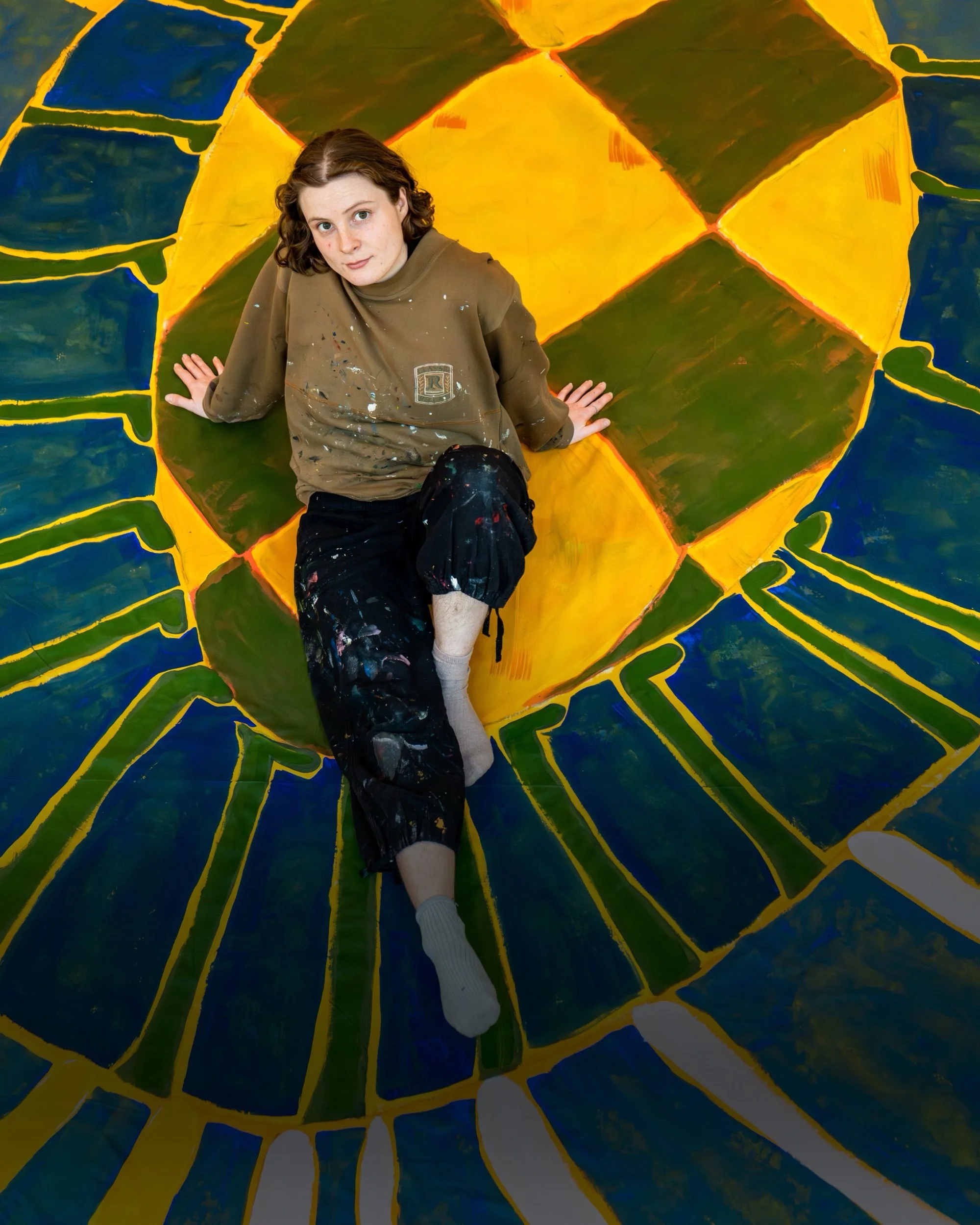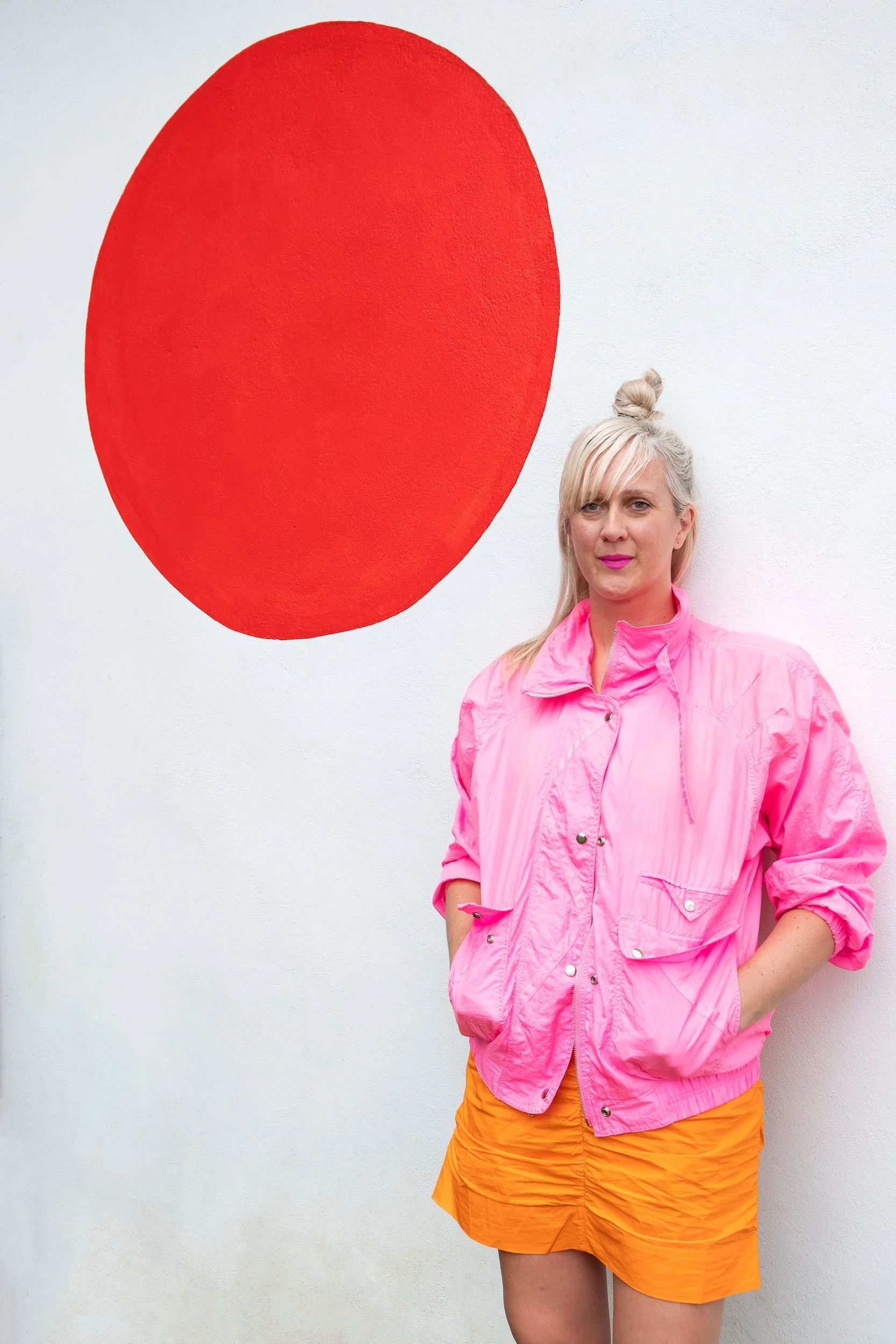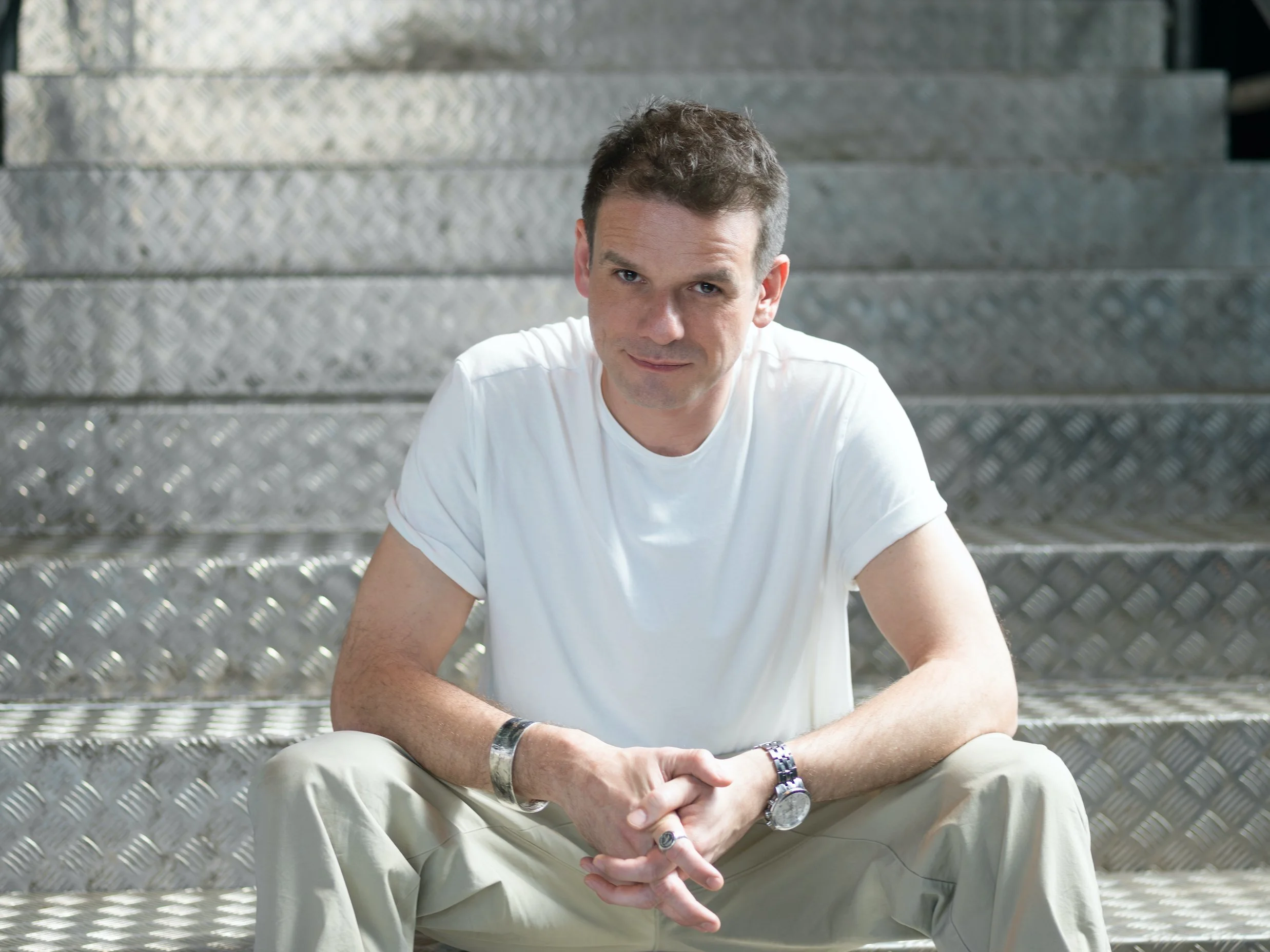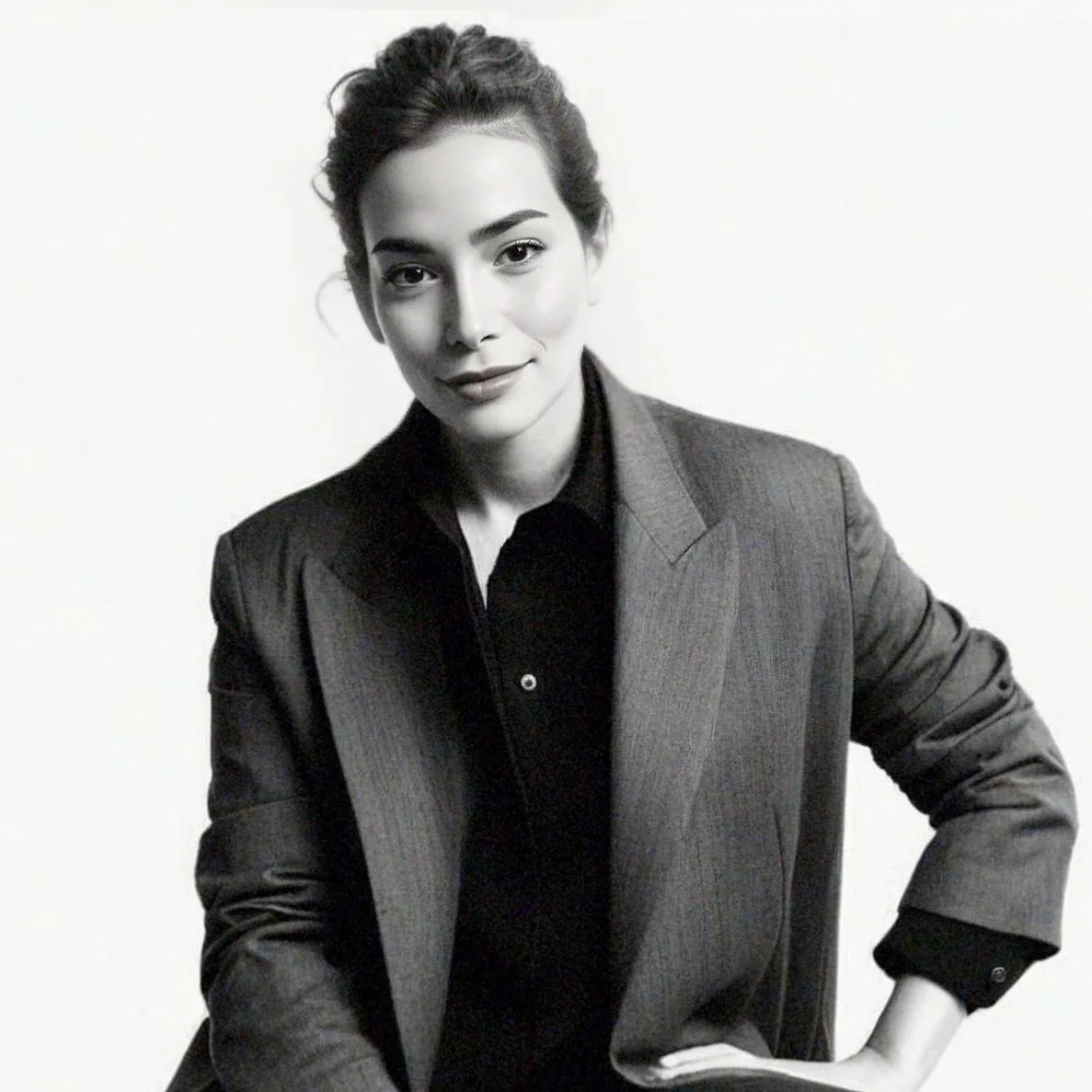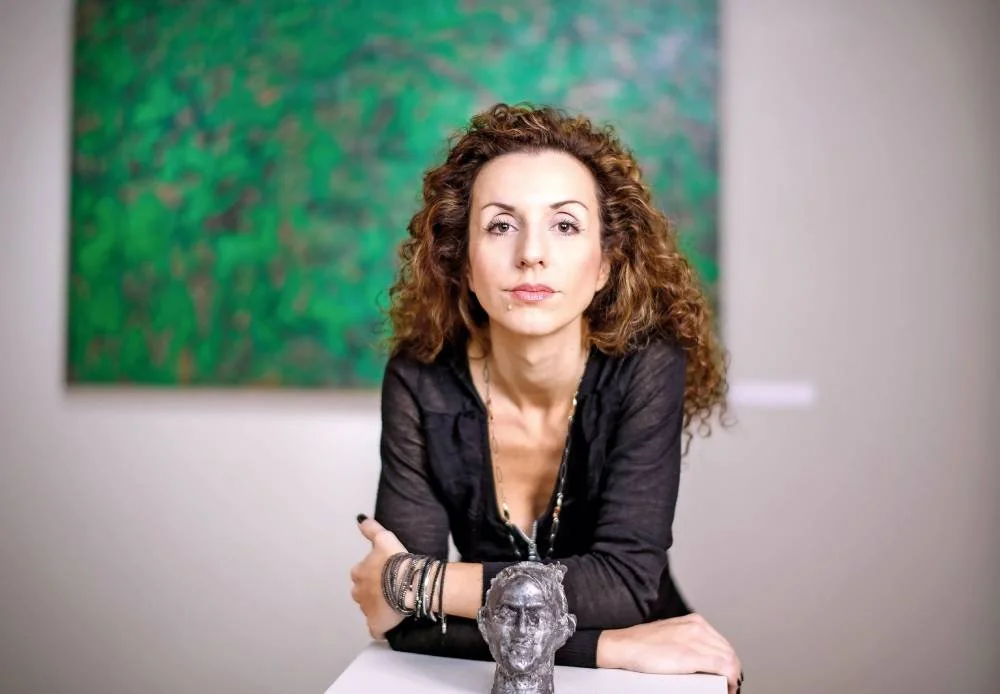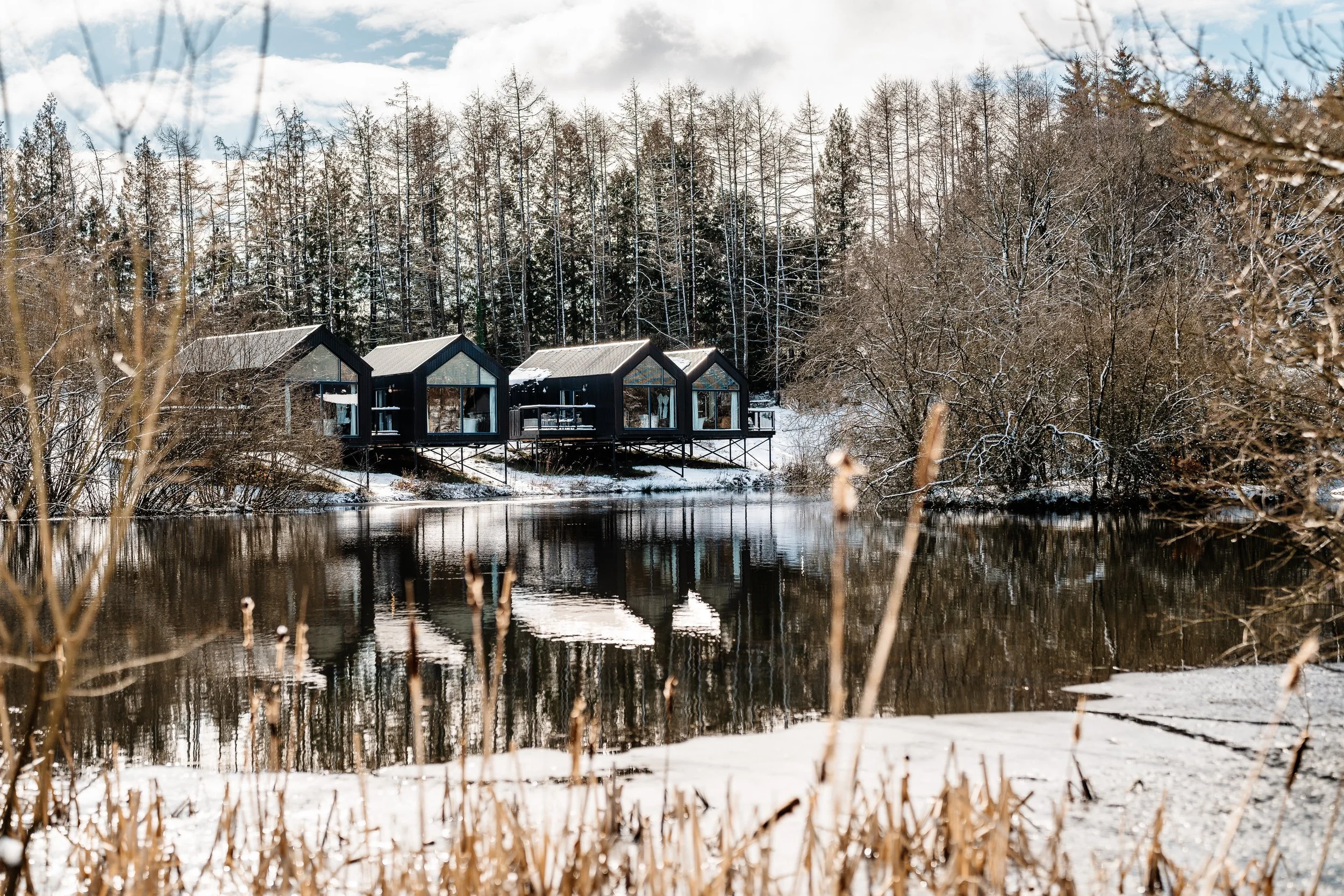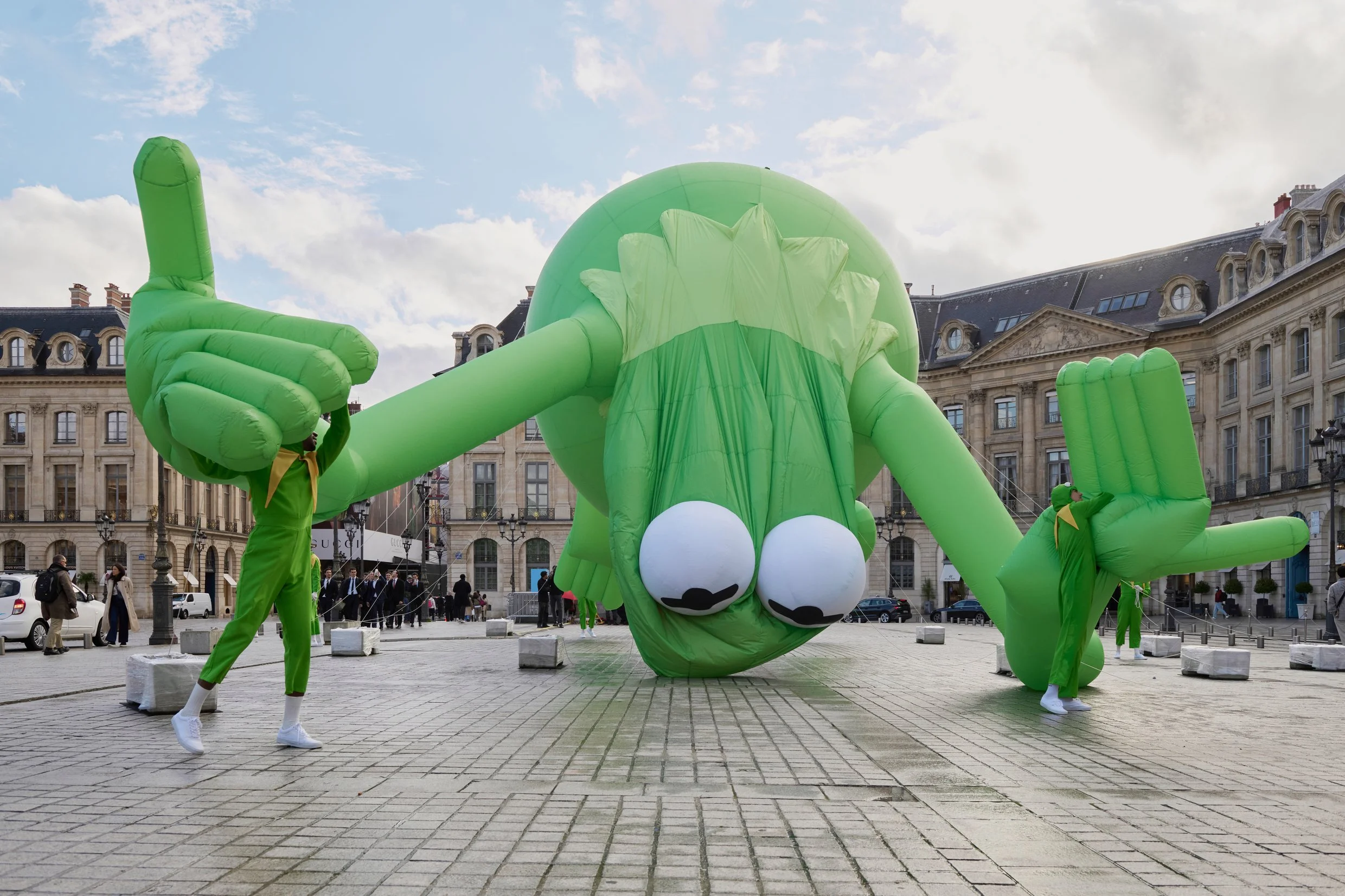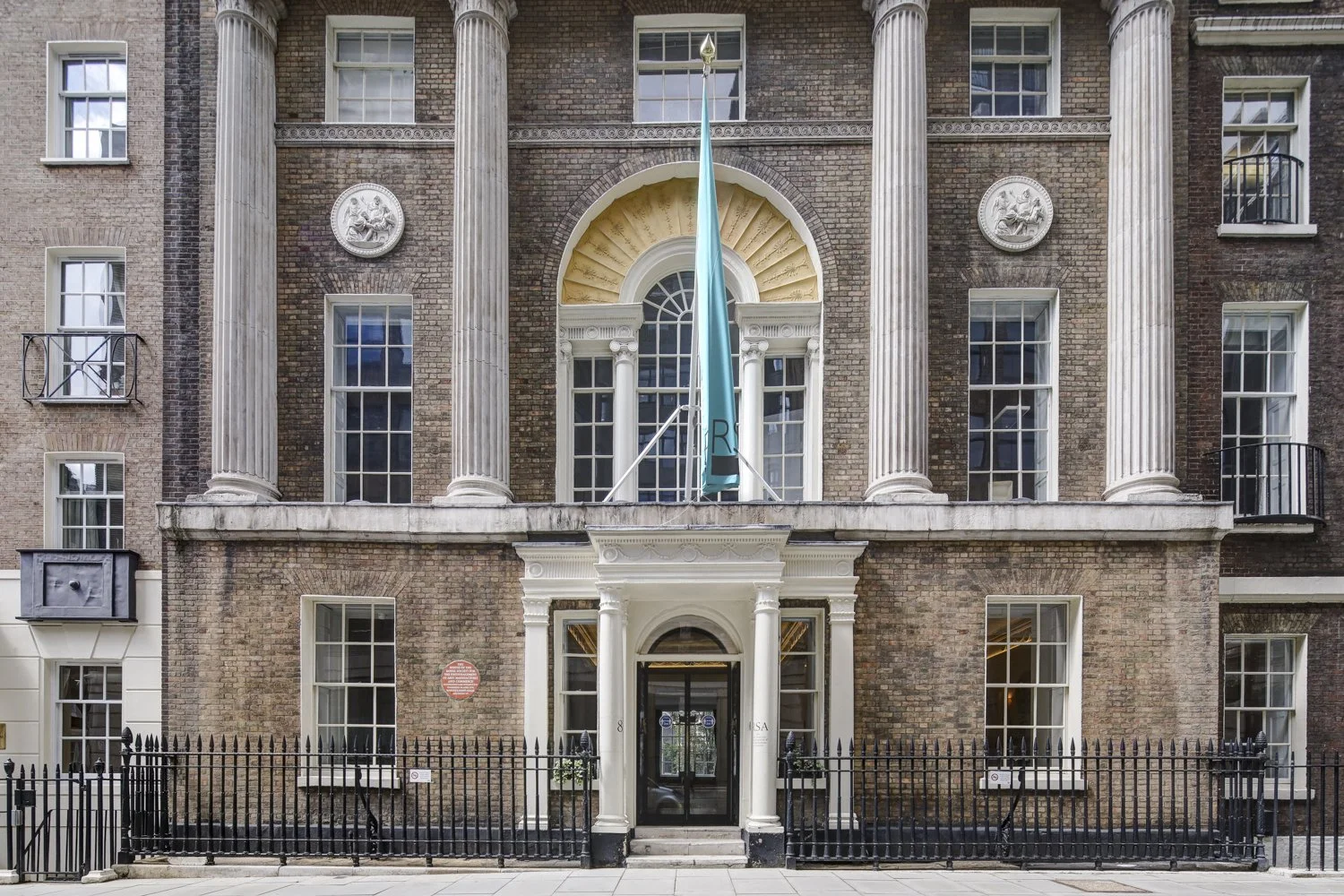In conversation with Judith Clark
“I love the discipline of exhibiting fashion as much as I did 30 years ago. It never exhausts itself for me …”
- Judith Clark

Portrait of Judith Clark, UAL. Photo: Loro Piana.
Judith Clark is a curator and fashion exhibition-maker, and currently Professor of Fashion and Museology at the University of the Arts London. She lectures on the MA Fashion Curation and is a founding Director of the Centre for Fashion Curation. From 1997 to 2002, she ran London’s first experimental fashion gallery in Notting Hill, and in 2020, she launched a new interdisciplinary studio space on Golborne Road, West London. Clark has curated major dress exhibitions internationally across galleries and museums, most recently If You Know You Know: Loro Piana’s Quest for Excellence at the Museum of Art Pudong, Shanghai (March–May 2025).
We recently caught up with Judith to discuss her latest project, I-01: Aprons, a collaborative residency with cultural historian and writer Carol Tulloch, which took place at Chelsea Space, UAL Chelsea College of Arts.
What originally drew you to fashion curation, and how has your understanding of the role of a curator shifted since your earliest exhibitions?
I studied architecture and wanted to put that together with my interest in fashion’s histories. I have always, therefore, thought of the role of the curator as absolutely embedded within the exhibition space. I guess how it has changed over the years is that I have had the great fortune of having staged exhibitions in many different spaces and countries and have developed a more nuanced practice. I used to be scared of mannequin wigs and props, whereas now I feel excited by the details and collaborative commissions that can be embedded in a project.
How has your approach to storytelling through clothing evolved over the years, and what continues to excite you about this field?
I love the discipline of exhibiting fashion as much as I did 30 years ago. It never exhausts itself for me and fortunately the context has changed. At first it was about making a case for fashion exhibitions, now as many more people recognise it as a distinct field of research it can be politicised more. It can not only say “dress is important” or “this is how dress evolved”; it can ask questions of the fashion industry.

I:01 APRONS residency workshop at Chelsea Space, Chelsea College of Arts (2025). Photo: Kit Lovelock. Courtesy of University of the Arts London
It seems like we are seeing a renewed interest in utilitarian garments, including aprons, on runways and in cultural conversations. Why do you think fashion is returning to function and workwear aesthetics at this moment?
Utilitarian fashion [like all fashions] come and go in cycles. What has been fantastic about looking at aprons and the relationship with fashion, is how it migrates from being a decorative panel, showing flourishes of embroidery, to a protective layer, to a pocket on a ribbon, to a fragment for the Avantgarde to experiment with. And then there is the greater persistence of course with aprons tailor made for specific trades that, given the choreographed nature of the craft, remains more constant.
The apron is a multifaceted garment, connected to domestic life, creativity, and labour. What surprised you most in your research or collaboration with Carol Tulloch about the ways aprons carry meaning across different communities?
The apron spans so many cultures and communities and the workshops we have been running during the residency at Chelsea Space has confirmed this. We have spoken a lot about domesticity, how it has been represented and under-represented in the museum, the apparent modesty of some of the aprons we have studied and their extraordinary power. We have also studied an apron that was de-accessioned from the V&A - this tells us something.
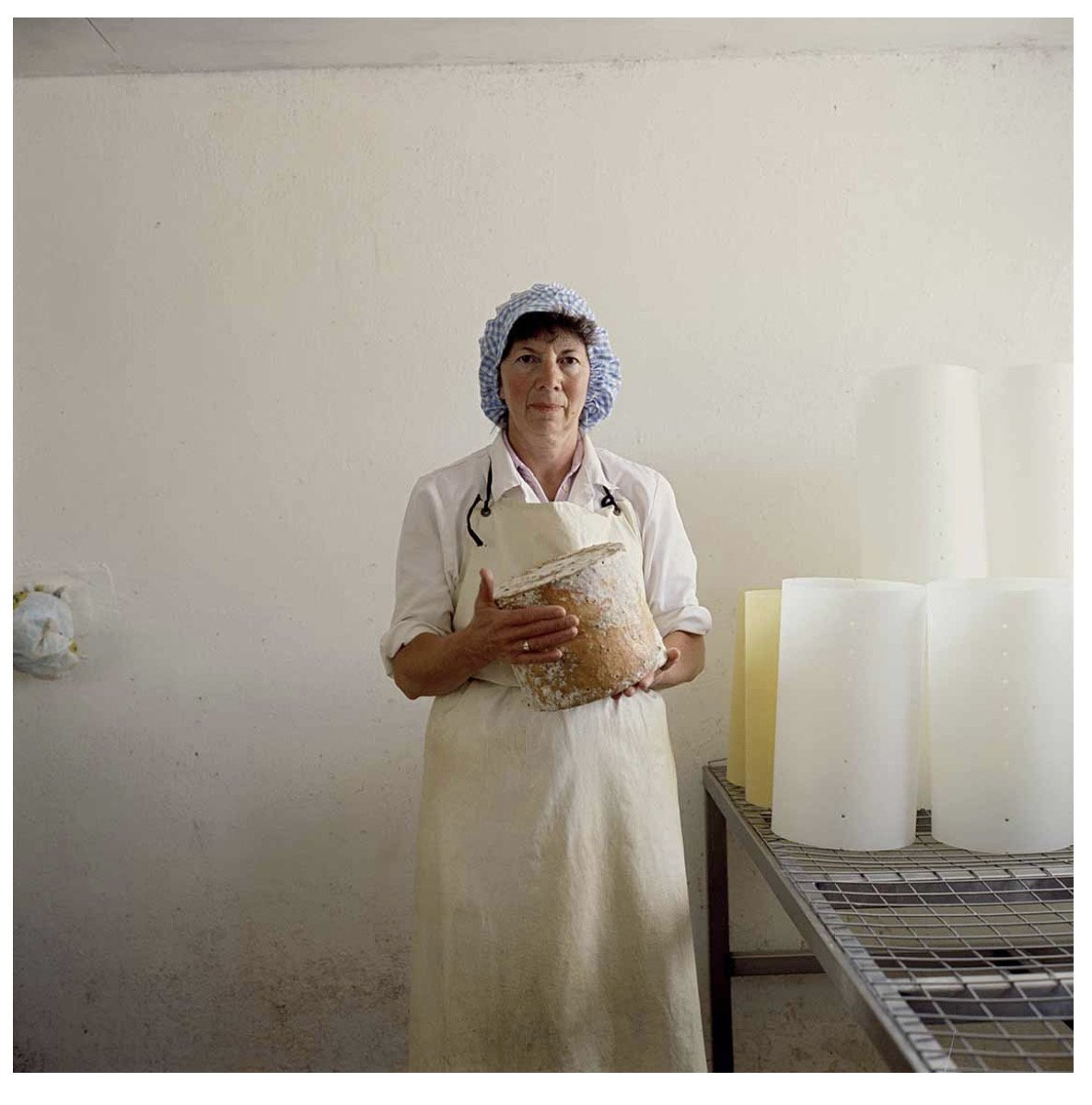
Toby Glanville Cheesemaker Dorset, 1994
This project resists treating the apron as merely nostalgic. How do you balance sentiment with critical analysis when presenting garments that have personal and cultural resonance?
Nostalgia hovers around aprons. There is a picture of a, perhaps lost, domestic space that has been hugely problematic, but that is a powerful carrier of memory. I think it is about repetition. People tend to change their clothes, but aprons are personal. Their use is ritualised, and they carry the stains of everyday life.
Given how much of fashion curation intersects with broader cultural narratives, race, class, gender, how do you see the industry adapting (or struggling) to engage more deeply with these layered conversations?
Carol Tulloch, who is a professor of dress, diaspora and transnationalism at Chelsea College of Arts, and I have been friends and colleagues for 25 years and the context in which we have worked together has changed seismically in that time. Fashion - about identity, about performativity, about sustainability, about the confluence of cultural systems and hierarchies - is now an area of research that can lead multiple debates. Museums are cumbersome institutions and so the projects for necessary change need to be made more reactive. Both Tulloch and I believe in temporary exhibitions to address this.
As the residency concludes with the publication launch, what do you hope people will take away from this project about the apron?
I guess it is about multiple readings of the apron. We have been incredibly delighted at the interest around this project. From community projects that are inspired by the workshops, to supporting individual researchers, to creating a collection that will be accessible within the BA (Hons) Textile Design course at Chelsea College of Arts, part of University of the Arts London (UAL). We have been clear all along that this wasn’t to be seen as an exhibition, but notes that document curatorial processes and exhibition-making considerations. I have brought mobile structures from my studio upon which to test material in 3D and the small publication is like a fold out map that contains the references we have been quoting along the way: from exquisite portraits of tradespeople by Toby Glanville, and Syd Shelton, a short story by Lydia Davis, books on whitework, the history of dress.
Website: judithclarkstudio.com
Instagram: @prefigured_
Charlotte Winifred Guérard is a London-based artist and recent graduate of the Royal Academy of Arts School, where she was recognised as a Paul Smith’s Foundation scholar for her artistic achievement. Her work has been exhibited at the Royal Academy, Coleman Project Space, Fitzrovia Gallery, Messums and Palmer Gallery, and she has completed prestigious residencies including the Porthmeor Studio 5 residency in St Ives with the Freelands Foundation. Primarily a painter, Charlotte explores how paintings can be activated…
BBC Radio 1 presenter, DJ, podcaster, and award-winning entrepreneur Jaguar joined us for our In conversation with series to discuss her journey from sneaking out to raves on the tiny island of Alderney to becoming a tastemaker in the UK dance scene, her debut EP flowers…
Annie Frost Nicholson is an artist whose work sits at the electric intersection of personal memory, public ritual and emotional release. Known for transforming private grief into bold, colour-saturated experiences - from stitched paintings to micro-discos - Annie’s practice creates space for collective healing without losing the rawness of its origins…
We spoke to visionary director Łukasz Twarkowski ahead of the UK premiere of ROHTKO, a groundbreaking production that takes inspiration from the infamous Rothko forgery scandal to ask urgent questions about originality, truth and value in art today. Combining theatre, cinema, sound and digital technology, the work challenges…
Iranian-born British curator and producer Tima Jam is the Founder of Art Voyage, a new migrant-led cultural platform committed to building a dynamic, equitable, and globally connected arts ecosystem through novel initiatives comprising exhibitions, public art, summits, residences, and community engagement to create a lasting cultural and social impact…
Betty Ogundipe (b. 2001) is a multidisciplinary artist of Nigerian heritage whose work explores resilience, femininity, and the power of love and resistance. Her debut solo exhibition, LOVE/FIGHT at Tache Gallery…
Absolut Vodka celebrated the launch of its Keith Haring Artist-Edition bottle with a public art takeover, transforming London’s Charing Cross station into “Haring Cross” on 17–18 September. We spoke with Deb Dasgupta, Absolut’s Vice President of Global Marketing…
Maya Gurung-Russell Campbell is an artist working across sculpture, image, and text, exploring personal and collective memory. She is currently studying at the Royal Academy Schools (graduating 2026) and holds a BA in Photography from the London College of Communication…
YARA + DAVINA make social practice artwork, creating ambitious public artworks that respond to site, context and audience. Unfailingly inventive, they use formats from within popular culture to make works which are accessible and playful…
Benni Allan is the Founding Director of EBBA Architects, a London-based studio recognised for its ambitious, cross-disciplinary approach that bridges architecture, culture, fashion and design. Benni founded EBBA to unite his passion for architecture, making and collaborative practice. In this interview, Benni discusses EBBA’s ethos and Pulse, a new installation commissioned for Houghton Festival at Houghton Hall…
Oskar Zięta is an architect, process designer and artist whose work challenges the boundaries between disciplines. His practice brings together design, engineering, art and bionics to create sculptural forms. His latest installation, ‘Whispers’, is currently on display outside One New Ludgate as part of the London Festival of Architecture 2025…
Danny Larsen is a Norwegian artist who has transitioned from a successful career in professional snowboarding to establishing himself as a distinctive painter. His detailed neo-pointillist landscapes reflect a deep connection to nature and a personal journey of transformation. Ahead of his debut London solo exhibition…
Nimrod Vardi and Claudel Goy, directors of arebyte Gallery, discuss how the space is redefining digital art by blending technology, social science, and immersive experiences. From AI and consciousness to the societal impact of tech, arebyte’s bold exhibitions go beyond visual spectacle, focusing on meaningful engagement and innovative presentation…
Varvara Roza is a London-based private art advisor and artist representative. She specialises in promoting contemporary art by both established and emerging international artists. In our conversation, we discussed her unique approach to the art market…
David Ottone is a Founding Member of Award-winning Spanish theatre company Yllana and has been the Artistic Director of the company since 1991. David has created and directed many theatrical productions which have been seen by more than two million spectators across 44 countries…
Akinola Davies Jr. is a BAFTA-nominated British-Nigerian filmmaker, artist, and storyteller whose work explores identity, community, and cultural heritage. Straddling both West Africa and the UK, his films examine the impact of colonial history while championing indigenous narratives. As part of the global diaspora, he seeks to highlight the often overlooked stories of Black life across these two worlds.
Gigi Surel is the founder of Teaspoon Projects, a groundbreaking cultural initiative launching in London with its first exhibition and programme. Dedicated to exploring contemporary storytelling, Teaspoon Projects blends visual arts and literature while encouraging audience participation through carefully curated events.
Dian Joy is a British-Nigerian interdisciplinary artist whose work delves into the intersections of identity, digital culture, and the fluid boundaries between truth and fiction. Her practice is rooted in examining how narratives evolve and shape perceptions, particularly in the digital age.
Youngju Joung is a South Korean artist known for her paintings of shanty village landscapes, illuminated by warm light. Inspired by memories of her childhood in Seoul, she uses crumpled hanji paper to create textured, lived-in spaces that reflect both poverty and affluence.
John-Paul Pryor is a prominent figure in London’s creative scene, known for his work as an arts writer, creative director, editor, and songwriter for the acclaimed art-rock band The Sirens of Titan…
Poet and novelist Hannah Regel’s debut novel, The Last Sane Woman, is a compelling exploration of the emotional lives of two aspiring artists living at different times, yet connected by the discovery of a box of letters in a forgotten feminist archiv…
Daria Blum, a 2023 RA Schools graduate, won the inaugural £30,000 Claridge’s Royal Academy Schools Art Prize in September. Her exhibition, Drip Drip Point Warp Spin Buckle Rot, at Claridge’s ArtSpace...
We recently interviewed Eden Maseyk, co-founder of Helm, Brighton’s largest contemporary art gallery, which has quickly established itself as a thriving cultural hub…
Lina Fitzjames is a Junior Numismatist at Baldwin’s Auction House, located at 399 Strand. She is part of a new generation reshaping the image of numismatics, the study of coinage….
Sam Borkson and Arturo Sandoval III, the acclaimed LA-based artists behind the renowned collective "FriendsWithYou," are the creative minds behind "Little Cloud World," now on display in Covent Garden. During their recent visit to London, we had the privilege of speaking with them about their creative process and the inspiration behind this captivating project.
Paul Robinson, also known as LUAP, is a London-based multimedia artist renowned for his signature character, The Pink Bear. This character has been featured in his paintings, photography, and sculptures, and has travelled globally, experiencing both stunning vistas and extreme conditions…
Koyo Kouoh is the Chief Curator and Executive Director of Zeitz MOCAA…
Matilda Liu is an independent curator and collector based in London, with a collection focusing on Chinese contemporary art in conversation with international emerging artists. Having curated exhibitions for various contemporary art galleries and organisations, she is now launching her own curatorial initiative, Meeting Point Projects.
Lily Lewis is an autodidact and multidisciplinary artist working in the realms of the narrative, be that in the form of a painting, a poem, large scale sculptures, tapestry, or performance…
Paul Vanstone is a sculptor recognised for his expertise in marble carving and depiction of human figures and fabric using light and stone interplay. He studied at Central St. Martins School of Art and completed an MFA at the Royal College of Art…
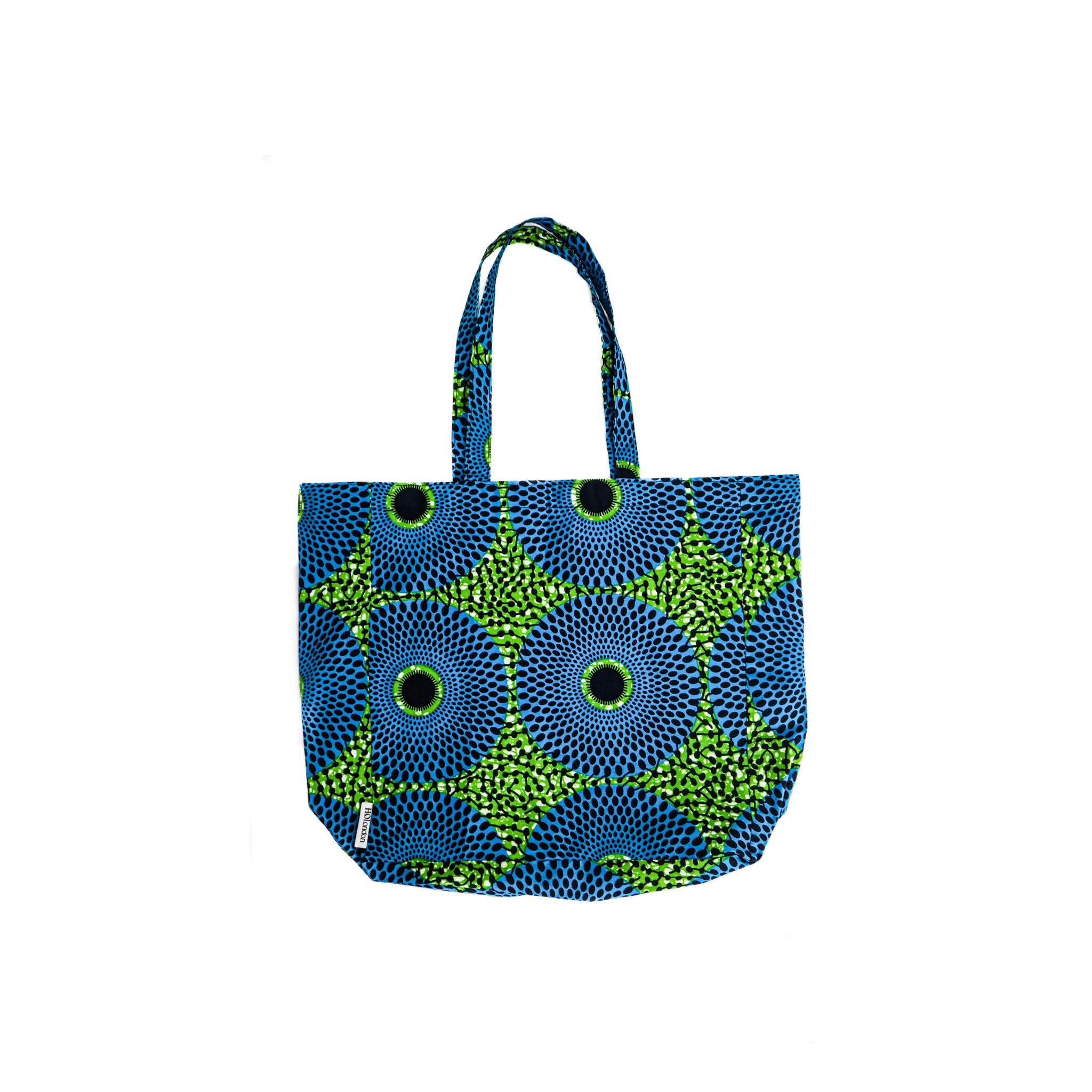
Charlotte Winifred Guérard is a London-based artist and recent graduate of the Royal Academy of Arts School, where she was recognised as a Paul Smith’s Foundation scholar for her artistic achievement. Her work has been exhibited at the Royal Academy, Coleman Project Space, Fitzrovia Gallery, Messums and Palmer Gallery, and she has completed prestigious residencies including the Porthmeor Studio 5 residency in St Ives with the Freelands Foundation. Primarily a painter, Charlotte explores how paintings can be activated…
This week in London, you can enjoy festive ice skating, Christmas lights, jazz and classical concerts, and a range of art exhibitions. Highlights include Skate at Somerset House, Christmas at Kew, the EFG Jazz Festival, and the Taylor Wessing Photo Portrait Prize 2025…
From the 6th to the 9th of November, the leading West African art fair Art X Lagos celebrates its 10th birthday at the Federal Palace on Victoria Island. Founded by Tokini Peterside-Schwebig in 2016, the fair has become an unmissable event in the global art calendar, attracting galleries from over 70 countries and participants from 170 countries since its launch…
If you’re after something bold, queer and completely uncategorisable this November, you need to know about KUNSTY, the Southbank Centre’s brand new four day performance series running from 5-8 November 2025…
London’s most beloved Christmas activity is back. As festive cheer returns to the city, with twinkling lights and the scent of mulled wine drifting through the air, for many Londoners and visitors from further afield, nothing quite captures the spirit of the city at Christmas like strapping on a pair of skates and stepping onto the ice…
As the crisp autumn air settles over London, the iconic gardens of Berkeley Square are once again hosting one of the most anticipated gatherings in the art and antiques world: the LAPADA Fair 2025, running from 28 October to 2 November…
November is a lively time to be in London, with the festive season in full swing and the city buzzing with events. From skating at Somerset House to Christmas lights switch-ons and festive markets like the Southbank Centre Winter Market, there are plenty of ways to embrace the holiday spirit. Beyond the seasonal festivities, London’s cultural calendar is brimming with art, music, and performance…
As far as weekend getaways go, this 70-acre estate offers a peaceful country escape with all the best elements of a traditional hotel experience. Staffordshire, arguably, is not yet on the map for luxury and leisure but set in the heart of the beautiful Staffordshire Moorlands, The Tawny surely is a beacon of things to come…
Art Basel Paris returns to the Grand Palais for its second edition from 24–26 October 2025, bringing together 206 leading galleries from 41 countries and territories. Below is our guide to seven artists not to miss at this year’s edition, each presenting distinctive work through their galleries…
Art Basel Paris 2025’s Public Programme turns the city into a stage for contemporary art, placing bold, large-scale works in streets, courtyards, and cultural landmarks - all free to visit. From a dreamy opera of 30 surreal figures at Palais d’Iéna to a colossal Kermit the Frog balloon looming over Place Vendôme, here is our guide to five standout works from the Art Basel Public Programme that you simply cannot miss…
Frieze London 2025 returns to Regent’s Park with a dynamic mix of emerging and established galleries, reaffirming the city’s creative pulse. Highlights include Esther Schipper’s dreamlike works by Sarah Buckner, Gagosian’s vibrant installation by Lauren Halsey, and Pace’s meditative paintings by William Monk. From Do Ho Suh’s ethereal fabric architectures at Lehmann Maupin…
Paris launches into its own spectacular celebration of art each October, transforming the city into a hub for collectors, curators, and cultural enthusiasts. From the grandeur of Art Basel Paris at the newly renovated Grand Palais to the focused energy of Paris Internationale, OFFSCREEN, AKAA and Menart, each fair contributes something unique to the city’s vibrant art scene.
British Ceramics Biennial is back and better than ever. Running until 19 October 2025, the dynamic programme of free exhibitions, screenings, talks and events is proving a hit with both locals and critics…and just an hour and a half’s train away from London, it’s well worth a day trip…
Echoes of Migration is the flagship summit to launch new not-for-profit platform Art Voyage this autumn. Echoes of Migration officially inaugurates Art Voyage’s innovative, itinerant cultural programme…and gears us up for what is in store for the Art Voyage Biennial….
Betty Ogundipe (b. 2001) is a multidisciplinary artist of Nigerian heritage whose work explores resilience, femininity, and the power of love and resistance. Her debut solo exhibition, LOVE/FIGHT at Tache Gallery…
The V&A’s Marie Antoinette Style, sponsored by Manolo Blahnik, is being hailed as the first landmark exhibition in the UK devoted to France’s most infamous Queen of Fashion. It is a glittering journey through silk, flamboyance and legacy….
Malta is fast becoming one of the Mediterranean’s hottest destinations, offering sun-soaked beaches into October, a thriving arts and culture scene, and stunning architecture and landscapes…
This October in London offers everything from Frieze and the BFI Film Festival to Peggy Gou, the London Literature Festival, and Halloween at Kew.
From The Phoenicia Hotel and Iniala Harbour House, Valletta showcases some of Malta’s finest hotels, ranging from landmark luxury where royalty once danced to boutique hideaways filled with Maltese art…
Discover the best restaurants in Malta, where to eat, drink and enjoy authentic Maltese food and Michelin-star dining…
October is the month for art in London, thanks to Frieze and several other art fairs taking place across the city. There will be a significant programme of shows across the capital’s galleries and institutions. Notable openings include Cosima von Bonin’s Upstairs Downstairs at Raven Row, examining 35 years of work through objects, characters, and early pieces unseen for more than a decade; Wolfgang Tillmans’ Build From Here at Maureen Paley, and Arthur Jafa’s first exhibition at Sadie Coles HQ…
This week in London, explore modern and contemporary art at the British Art Fair, experience couture drama with LACRIMA at the Barbican, celebrate heritage at the Chelsea History Festival, enjoy a decade of dance with Acosta Danza at Sadler’s Wells, and step into Shakespeare’s world with Hamlet at the National Theatre…
With just 100 days to go until Christmas, London’s West End is preparing for the festive season. Carnaby Street and Covent Garden have confirmed their 2025 Christmas lights switch-on dates, signalling the start of celebrations across the capital…
Ladbroke Hall has been a fixture in Notting Hill since 1903, when it opened as the Clément-Talbot car showroom, Britain’s first purpose-built car factory. Designed to resemble an English country house, the building has since served a variety of roles, from producing military vehicles during the First World War to housing Thames Television in the 1980…
An essential guide to Ibiza, from modern art at MACE and Museo Puget, to cliffside dining at Amante and farm to table dining at Juntos House, iconic nightlife at Pacha and Ushuaïa, and serene luxury at Soho Farmhouse Ibiza…
Ibiza’s nightlife is truly legendary, known worldwide as the ultimate playground for party-goers. For decades, the island has attracted the very best international DJs and music lovers from across the globe. Here is our guide to seven of the best clubs to visit in Ibiza, starting with the absolute giants and working down to gems like Chinois…
Discover the best of London this weekend! From landmark exhibitions such as Marie Antoinette Style at the V&A and Material World at Kew Gardens, to live music and a curry festival on Brick Lane…

